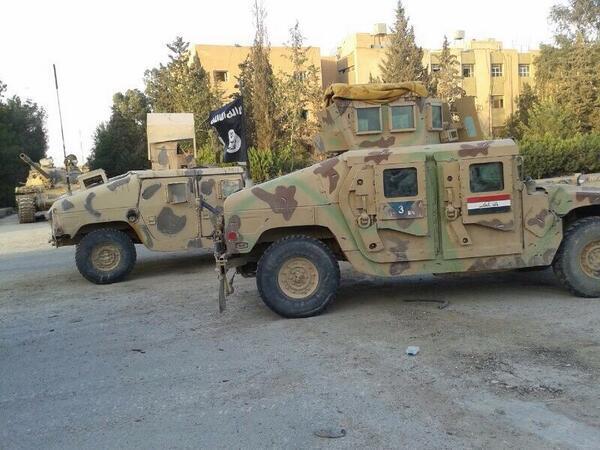11 months ago, I wrote an article -- 11 Car Bombs for Baghdad -- discussing the ramifications of the escape of top Al-Qaeda guys from Abu Ghraib prison. Hundreds of top-level fighters managed to escape the prison last July, after a coordinated series of attacks that signaled to the Iraqi government and the world just how vulnerable of a nation America had left behind. Worse, the attack was an inside job, highlighting the extent to which the Iraqi government had been infiltrated by radical Sunni separatists.
At the time, I wrote: "250 Al-Qaeda guys is more than many other Arab countries have, and their
escape signals the beginning of the next phase in the American-led
offensive to topple President Assad in Syria... unless Iraq breaks up into separate
Sunni and Shia states, Western powers will not be able to topple
him [Assad.] The only way to bring down Assad is by breaking up Iraq, creating a
Sunni state near his borders with a population sympathetic to the Free
Syrian Army. At this point, there is no stopping the break up of
Iraq; it was written in the pages of destiny the minute Bush and
Rumsfeld decided to disband the largely-Sunni Iraqi army, and empower
the Shia majority. The prison break at Abu Ghraib will only serve to
speed up the inevitable.
The coming insurgency in Iraq will be far-worse than the previous."
11 months later, it appears as if American foreign policy has seen proof of its failure, but the reality is that our government's objectives have been fully met. Though the attacks of September the 11th gave us impetus for toppling our enemies in the Middle East, the US military could not directly and simultaneously engage in a war against enemies stretching from the Mediterranean to the Federally Administered Tribal Areas of Pakistan; just engaging against the Iraqi and Pashtun insurgents was extremely taxing for the Pentagon. To destabilize our enemies, we needed to create an arc of instability dab-smack in the middle of our enemies' territory.
As General Wesley Clark famously revealed, elements within the upper echelons of the American politico-military establishment drafted a "Seven-countries memo," where the framework was developed to take down seven regimes considered hostile to the US: "starting with Iraq and then Syria, Lebanon, Lybia, Somalia, Sudan, and finishing off Iran."
To indirectly accomplish the goal of taking out multiple governments, the US government agitated relations between Sunnis and Shias, creating a climate that would succeed in plunging the Syrians and Iranians into a protracted war of attrition against Sunni forces. Just hours ago, London's The Guardian published an article -- US and Iran to join fight against Sunni Jihadis of Isis in Iraq.
The Iranians, for the time being, have no choice but to fight against an enemy created thanks to America's intervention, and with America's indirect help. ISIS has looted the Iraqi army's Pentagon-hand-me-downs, so it is with American weapons that Iraqi Shiites, Syrian Alawites, and Iranians will battle against their enemy. No one will question how Sunni rebels have accrued such an arsenal of US weapons; stolen from bases in Nineveh province, the Pentagon will argue.

